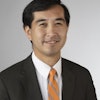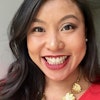Within Hartford, Connecticut, lies a vast community made up of people from across the Asian continent.
The Asian population in Hartford County alone totals more than 53,000, making it one of the counties in the state with the most Asian residents. This marks an increase of more than 15,000 Asian people in the county since 2010.
The city and area hold a large population of people from places such as India, Pakistan, and Bangladesh, along with more recent refugees from Afghanistan and Syria, according to Dr. Jason Oliver Chang, director of the Asian and Asian American Studies Institute at the University of Connecticut.
 Dr. Jason Oliver Chang
Dr. Jason Oliver Chang
More than 170,000 Asian people reside in the state of Connecticut, according to the U.S. Census Bureau’s 2020 Census.
With a new federal grant that Chang and his fellow UConn faculty and staff members have secured from the U.S. Department of Education, the school can better support and serve that sizable demographic, spurring them to become future leaders.
The $1.9 million grant – lasting five years – will go toward what this cadre of faculty and staff are calling the Transformation, Equity, Access, and Sense of Belonging (TEAS) project, which is directly aimed at aiding Asian students at UConn’s regional campus in Hartford.
UConn Hartford’s Asian American student population comprises 17% of all students on the campus, according to UConn.
The TEAS project is approaching the need to support its significant Asian student body from multiple angles, seeking out what would be the most beneficial: mentorship, mental health, and curriculum. It will also be hiring a full-time program coordinator to help manage the grant’s efforts.
Mentorship
Part of the grant’s funds will be used to replicate a peer mentoring program that already exists on UConn’s main campus in Storrs, Connecticut. The Asian/Asian American Mentoring Program (AMP) – housed in UConn’s Asian American Cultural Center – pairs returning students to incoming ones to help these new Asian students better adjust to their new environment.
“The idea is to help the incoming students navigate their way around the Hartford campus as they become first-year college students, help them find resources on campus, answer questions about classes, and then just get them acclimated,” says Angela Rola, founding director of UConn Storrs’ Asian American Cultural Center and one of the co-principal investigators (PIs) for the grant. “We know that there are certain issues that we want to tackle in the mentoring program. And that is because many of our students are first-generation and low-income.”
The Hartford campus itself holds a large percentage of first-generation students, according to Rola.
The mentorship program is meant to provide incoming students the settings and opportunities to prepare themselves for academic careers, all the while facilitating connection among one another.
One of AMP’s express goals, as listed on its website, is to help students explore their Asian American identities and “raise self-awareness of the Asian American by exploring personal backgrounds, personality traits, and behaviors, and social and political realities.”
By creating a similar program at the Hartford campus, students there are provided a sense of familiarity for when they later come to the Storrs campus to finish their studies, says Rola, who identifies as a Filipina American.
Jeff Alton, assistant director of the Asian American Cultural Center and one of the grant’s co-PIs, will teach a class for the program’s mentors and is currently doing revisions and preparing to launch the first-class next year, Rola says.
The Hartford iteration of AMP’s goal is to start small with around 12 mentors for its first year, according to Rola. These returning students-turned-peer mentors will be paid for their services, in contrast to the volunteer status of the Storrs program’s more than 70 mentors.
Katie Martin, an assistant campus director on the Hartford campus, serves as the grant’s other co-PI.
Mental Health
TEAS will bring aboard an additional full-time clinical therapist as well to help boost Asian American student retention and completion. The search for the new hire is currently underway, according to Rola.
This comes as part of Rola’s comprehensive work to provide cultural competency training for the Hartford campus along with her ongoing efforts at Storrs.
“Coming off of COVID and all of the experiences that our community has gone through, I think now we’re seeing all the effects of that,” Rola says. “And so, just to help people become more culturally competent – whether that is faculty or other staff – we are hoping that we can come in and help people get the training and the information they need so that they can better serve our community.”
Curriculum
Alongside wraparound services and culturally competent faculty and staff, what’s taught in the classroom is also vital to bolstering student success, Chang says. In particular, courses wherein the students can “see themselves” and learn more about their communities are potent in making a difference, he says.
As it stands now, Chang is the only faculty member who teaches Asian studies at the Hartford campus. But per the ED grant, that will soon change with the hiring of a new visiting assistant professor.
The professor will be based on the Hartford campus in UConn’s College of Liberal Arts and Sciences. Their time at Hartford will be tied to the five-year duration of the grant, which the applicants are hoping to extend, Rola explains, adding that the faculty search is now ongoing.
At Hartford, the incoming professor will be teaching courses on two core topics: critical refugee studies and critical Muslim studies.
Disaggregated data of Connecticut’s students and residents indicates that the Hartford’s campus’s course offerings have not kept pace with the area’s demographics, Chang says.
 Angela Rola
Angela Rola
The critical refugee studies course, unlike much of the scholarly work in the past, will not apply an outsider’s lens to the population and treat them as a group with problems that need to be solved through politics and policy, Chang explains. Rather, the course will adopt a more modern view of the topic, incorporating and putting refugee voices at the forefront.
Additionally, students in the course will be encouraged to engage and take part in the work that is being done by local organizations, such as the Hmong Foundation of Connecticut, the Vietnamese Mutual Aid Association of Connecticut, and Integrated Refugee and Immigrant Services (IRIS).
There, students get the chance to do research, conduct oral histories, work with community leaders, and help document traumatic and often-silenced refugee stories.
“We believe that creating these kinds of opportunities for creativity, community involvement, and storytelling and sharing is also a really important step for these communities to be in charge of their own healing,” Chang says.
Meanwhile, critical Muslim studies will delve into matters of Muslim identity, lived experiences, and constant hardships such as Islamophobia and anti-Muslim racism. It is a field borne out of experiences in a post-9/11 world and the “so-called war on terror,” where Arab and Muslim identities were so tied to terrorism and war-making, Chang explains.
Critical Muslim studies separates itself from other courses that teach similar but distinctly different subject matter. Middle Eastern studies only covers a small portion of the Muslim world. Arabic studies only pertain to the 20% of Muslims who speak Arabic. And Islamic studies focuses much more on religious texts such as the Quran.
To Chang, there is a difference between Islamophobia and anti-Muslim racism. Part of the course will be about discerning between the two.
The former is a fear or hatred of Islam as a religion and the belief that those who have made the choice to practice it can be persuaded to choose or assimilate otherwise, such as via a ban on hijabs, Chang explains in an email. Anti-Muslim racism, on the other hand, has to with hatred and bigotry toward Muslim people “as if the negative attributes given to them are fixed and permanent.”
One example of domestic anti-Muslim racism is the U.S.’s 2001 Patriot Act, which Chang says authorized police infiltration and surveillance of American Muslim communities and wrongful incarceration of people assumed to be terrorists.
“Patterns of racialization in the U.S. and elsewhere really point to anti-Muslim racism,” he says. “That’s an experience of having state violence directed at you, discriminatory policies, as well as feeding the rationale for war and imperialism.”
UConn Hartford’s critical Muslim studies course will also examine Asian-Muslim diasporas, including those to Connecticut. Chang notes that one third of all imams, Islamic religious leaders, from divinity schools in the U.S. come from the Hartford Seminary, now named the Hartford International University for Religion & Peace.
“After almost 20 years of teaching Asian American studies, I can’t tell you how many students I’ve had who said: ‘Why did I have to wait so long to learn about my community?’” Chang shares. “That kind of recognition, validation, that experience of being known, and also that your history matters in a really profound way has significant impacts on students and their academic careers and their careers outside of university.”





















